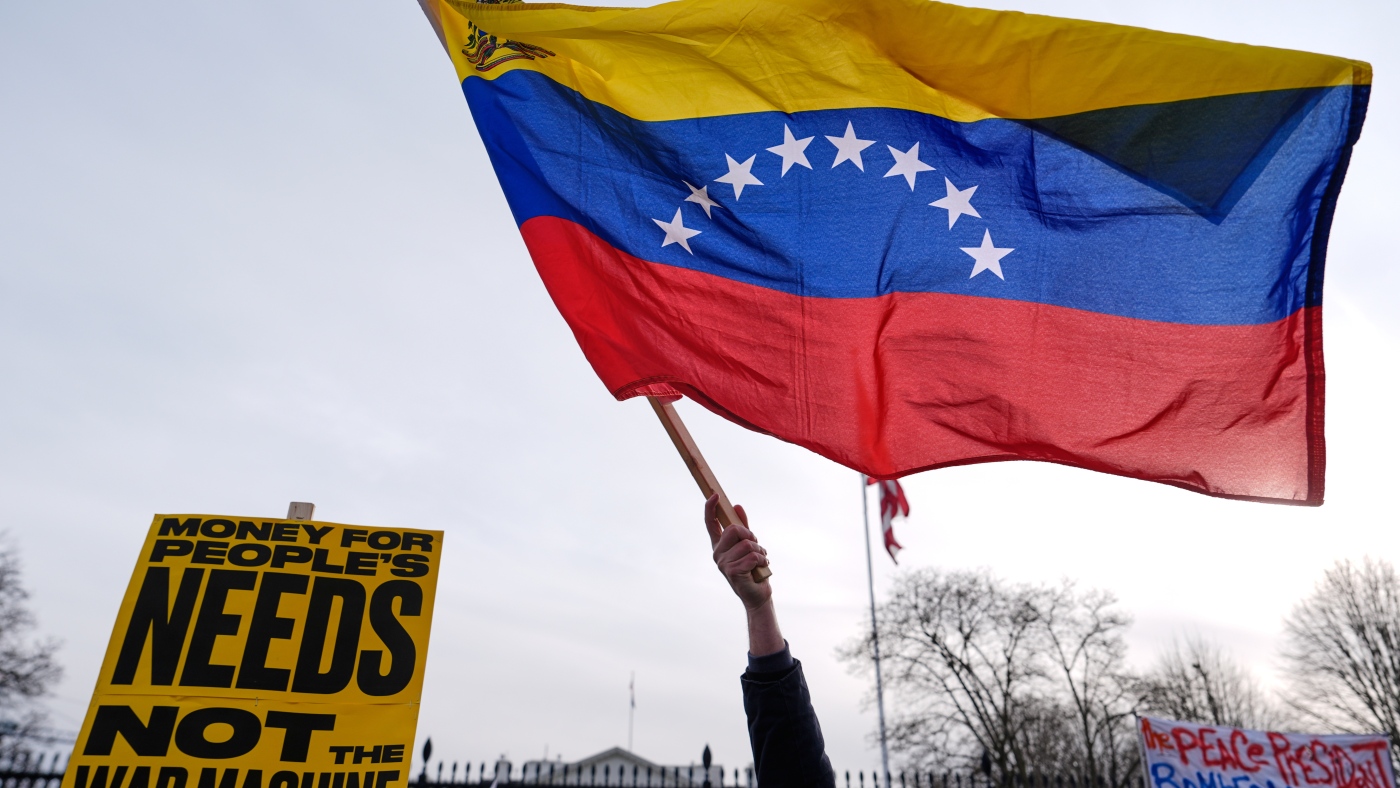Ohio
What do protesters at Miami University want? What has the university said? What to know
Israel-Hamas war: Protests held at Ohio State over conflict in Gaza
Several student and community groups attended a demonstration at Ohio State University Wednesday evening to protest the ongoing Israel-Hamas war in Gaza.
Over the past week, universities across the nation have been at the center of pro-Palestine protests in which students have organized marches and encampments to demonstrate solidarity for an end to Israel’s war in Gaza.
In Ohio, protests have been reported at Ohio State University, Case Western Reserve University and most recently, Miami University in Oxford. The protest began Thursday evening with a march and concluded with an encampment at the University Seal, located right in the heart of campus outside of Roudebush Hall.
Here’s everything we know about the protest as of Friday evening:
Are protests allowed at Miami University?
Students are allowed to protest and march in outdoor areas of the campus. However, protests cannot disrupt teaching, research or previously scheduled events.
Are non-students protesting?
Miami University Students for Justice in Palestine, a student group that describes itself on social media as connected to the university, organized the pro-Palestine march and encampment. They were also joined by the university’s chapter of the Young Democratic Socialists of America, according to a statement from the university.
According to university rules, non-students can only demonstrate on campus perimeter sidewalks designated by Miami, and have to comply with the same rule as staff and students.
What are the protesters demanding?
According to a statement from the Students For Justice in Palestine, the protest is to demand that Miami University disclose and divest its funds from companies involved in the “perpetuation of this genocide.”
More specifically, they want the university to stop investing in companies that do business with Israel.
“Miami students are joining together in solidarity to demand our university to disclose and divest its funds from the extremist Israeli genocide of Palestinians,” the statement reads.
The student group met with Miami University President Gregory Crawford on Wednesday, a day before Thursday’s protest, to present their demands of disclosure and divestment. However, their efforts were mostly unsuccessful, according to the statement from Student for Justice in Palestine.
What has the university said?
Shortly after the protesters had set up the encampment Thursday, Miami University issued a statement:
“The safety of our students is Miami University’s top priority, and that priority will guide university actions in this unfolding situation. Students for Justice for Palestine, a student organization, held a march this evening (May 2), and were joined by the Young Democratic Socialists of America. As with any demonstration, university staff have been present to maintain student safety and ensure that university policy is followed. Unfortunately, participants have chosen not to follow university policy. Those present have been informed that they are currently violating policy and must come into compliance.”
A number of protesters stayed at the encampment overnight and some are still there as of Friday afternoon.
The university issued a second statement Friday, saying the student organizations that set up the unauthorized encampment have since come into compliance with the university’s policy.
“Encampments create the need to provide continuous safety and security resources, which can divert these important resources away from the rest of our community,” the statement reads. “They can interfere with students’ ability to attend classes and prepare for finals and can strain the resources and facilities of the buildings located nearby. We continue to prioritize providing support and care for all of our students. Throughout this year, members of our student life staff have been in regular contact with students and student organizations discussing their concerns and supporting their well-being. We will continue to do so.”
What can’t protesters do?
Protesters are not allowed to use amplified sound, create temporary structures or leave behind literature. Miami also imposes safety measures, such as restrictions on campfires and outdoor camping.
Can Miami University have protesters arrested?
Demonstrations that block traffic or pedestrians, prevent access to a building or space, prevent a space from being used for its intended purpose or disrupt school activities could lead to an arrest, Miami’s website states.
Was there any opposition to the protest?
Enquirer media partner Fox19 reported that a group of Jewish students gathered across from the encampment in opposition. As of Friday evening, there were no reported clashes between any of the opposing groups.
Hillel, a Jewish student group at Miami University, said in a statement on social media that it is aware of the protest and is continuing to provide support to Jewish students.
“We are hopeful that the protest will be peaceful and that Miami affiliates will eschew the antisemetic language and incidents that have happened on other campuses,” the statement reads. “Our top priority is the physical and emotional safety of our students − first, foremost, and always.”
“While students have a right to protest, they do not have a right to intimidate or threaten Jewish and Israeli students − their classmates, peers, and for some, fellow Jews − who may have different viewpoints,” Hillel added in their statement.

Ohio
Ohio State has added a tight end as its first 2026 transfer portal addition

COLUMBUS, Ohio –Ohio State had added the first player to its 2026 transfer portal class.
Mason Williams is a former member of the 2023 recruiting class who spent his first three seasons as an Ohio Bobcat. After redshirting his freshman season, he’s spent the last two as a vital member of the Bobcats’ offense as both a blocker and a receiver.
In 1,133 snaps, Williams caught 48 passes for 565 yards and six touchdowns. As a blocker, he can be a reliable end-line tight end who can replace the loss of Will Kacmarek, who is out of eligibility. Kacmarek also came from Ohio in 2024 and spent the last two years as a major contributor, developing into one of the nation’s best blocking tight ends.
Williams will have two years of eligibility remaining in Columbus. His addition helps offset the loss of Kacmarek to graduation and Jelani Thurman to the transfer portal. He’ll join a room expected to feature Bennett Christian, Nate Roberts, Brody Lemon and Maxence LeBlanc. Nick Lautar will also join the room as an incoming freshman.
OSU is also waiting for the decision of Purdue transfer Max Klare, who has the option of declaring for the NFL Draft or returning in 2026.
Ohio
Ohio State Transfer QB Lincoln Kienholz Commits to Louisville

LOUISVILLE, Ky. – The Louisville football program, presumably, has their QB1 for the 2026 season.
Former Ohio State quarterback Lincoln Kienholz announced Saturday that he has committed to the Cardinals. He will join Louisville will two years of eligilbility.
Keinholz is Louisville’s second portal commitment of the cycle, joining Kentucky cornerback D.J. Waller. The duo are the first to offset 21 portal defections that UofL has seen so far. The 14-day transfer window officially opened up this past Friday, and is the only opportunity for players to enter following the removal of the spring window.
The 6-foot-2, 214-pound quarterback was involved in a highly competitive battle for the Buckeyes’ starting gig in the preseason, before ultimately losing out to eventual Heisman Trophy finalist Julian Sayin. He saw action in seven games this past season, going 11-of-14 through the air for 139 yards and a touchdown, while also rushing for 66 yards and two scores on 11 attempts.
“Just a tremendous athlete,” OSU head coach Ryan Day said of Kienholz at Big Ten Media Days this past summer. “You pick a sport, he can do it. He’s like a four handicap [in golf]. He can hit the [baseball] out of the park. He was a major league baseball prospect. He can windmill dunk. He can do a lot of things.”
The Pierre, S.D. native spent three seasons in Columbus. As a true freshman in 2023, he played in three games, going 10-of-22 for 111 yards, while also rushing for two yards on six attempts. He did not log any stats during Ohio State’s 2024 national championship season.
Kienholz was a highly-regarded recruit coming out of high school, ranking as No. 194 prospect in the Class of 2023. He chose Ohio State over Illinois, Kansas State, Pitt, Washington, Wisconsin and others.
He has the inside track to be Louisville’s starter next season given recent roster movement. Previously, incoming true freshman Briggs Cherry was the lone scholarship quarterback on the roster after Deuce Adams, Brady Allen and Mason Mims all hit the transfer portal.
In their third season under head coach Jeff Brohm, Louisville went 9-4 overall, including a 4-4 mark in ACC play and a 27-22 win over Toledo in the Boca Raton Bowl. The Cardinals have won at least nine games in all three seasons under Brohm, doing so for the first time since 2012-14.
More Cardinals Stories
(Photo of Lincoln Kienholz: Adam Cairns – Columbus Dispatch / USA TODAY NETWORK via Imagn Images)
You can follow Louisville Cardinals On SI for future coverage by liking us on Facebook, Twitter/X and Instagram:
Facebook – @LouisvilleOnSI
Twitter/X – @LouisvilleOnSI
Instagram – @louisvilleonsi
You can also follow Deputy Editor Matthew McGavic at @Matt_McGavic on Twitter/X and @mattmcgavic.bsky.social on Bluesky
Ohio
Ohio Lottery Pick 3 Midday, Pick 3 Evening winning numbers for Dec. 28, 2025
The Ohio Lottery offers multiple draw games for those aiming to win big. Here’s a look at Dec. 28, 2025, results for each game:
Pick 3
Drawings are held daily, seven days a week, at 12:29 p.m. and 7:29 p.m., except Saturday evening.
Midday: 9-0-9
Evening: 2-4-1
Check Pick 3 payouts and previous drawings here.
Pick 4
Drawings are held daily, seven days a week, at 12:29 p.m. and 7:29 p.m., except Saturday evening.
Midday: 6-4-5-8
Evening: 4-6-2-6
Check Pick 4 payouts and previous drawings here.
Pick 5
Drawings are held daily, seven days a week, at 12:29 p.m. and 7:29 p.m., except Saturday evening.
Midday: 6-8-6-2-0
Evening: 2-4-5-7-9
Check Pick 5 payouts and previous drawings here.
Rolling Cash 5
Drawings are held daily, seven days a week, at approximately 7:05 p.m.
10-11-15-19-34
Check Rolling Cash 5 payouts and previous drawings here.
Lucky For Life
Drawings are held daily, seven days a week, at approximately 10:35 p.m.
12-17-25-34-42, Lucky Ball: 09
Feeling lucky? Explore the latest lottery news & results
This results page was generated automatically using information from TinBu and a template written and reviewed by an Enquirer digital news director. You can send feedback using this form.
-

 World1 week ago
World1 week agoHamas builds new terror regime in Gaza, recruiting teens amid problematic election
-

 Indianapolis, IN1 week ago
Indianapolis, IN1 week agoIndianapolis Colts playoffs: Updated elimination scenario, AFC standings, playoff picture for Week 17
-

 Business1 week ago
Business1 week agoGoogle is at last letting users swap out embarrassing Gmail addresses without losing their data
-

 Southeast1 week ago
Southeast1 week agoTwo attorneys vanish during Florida fishing trip as ‘heartbroken’ wife pleads for help finding them
-

 World1 week ago
World1 week agoSnoop Dogg, Lainey Wilson, Huntr/x and Andrea Bocelli Deliver Christmas-Themed Halftime Show for Netflix’s NFL Lions-Vikings Telecast
-

 Politics1 week ago
Politics1 week agoMost shocking examples of Chinese espionage uncovered by the US this year: ‘Just the tip of the iceberg’
-

 News1 week ago
News1 week agoRoads could remain slick, icy Saturday morning in Philadelphia area, tracking another storm on the way
-

 World1 week ago
World1 week agoPodcast: The 2025 EU-US relationship explained simply




















